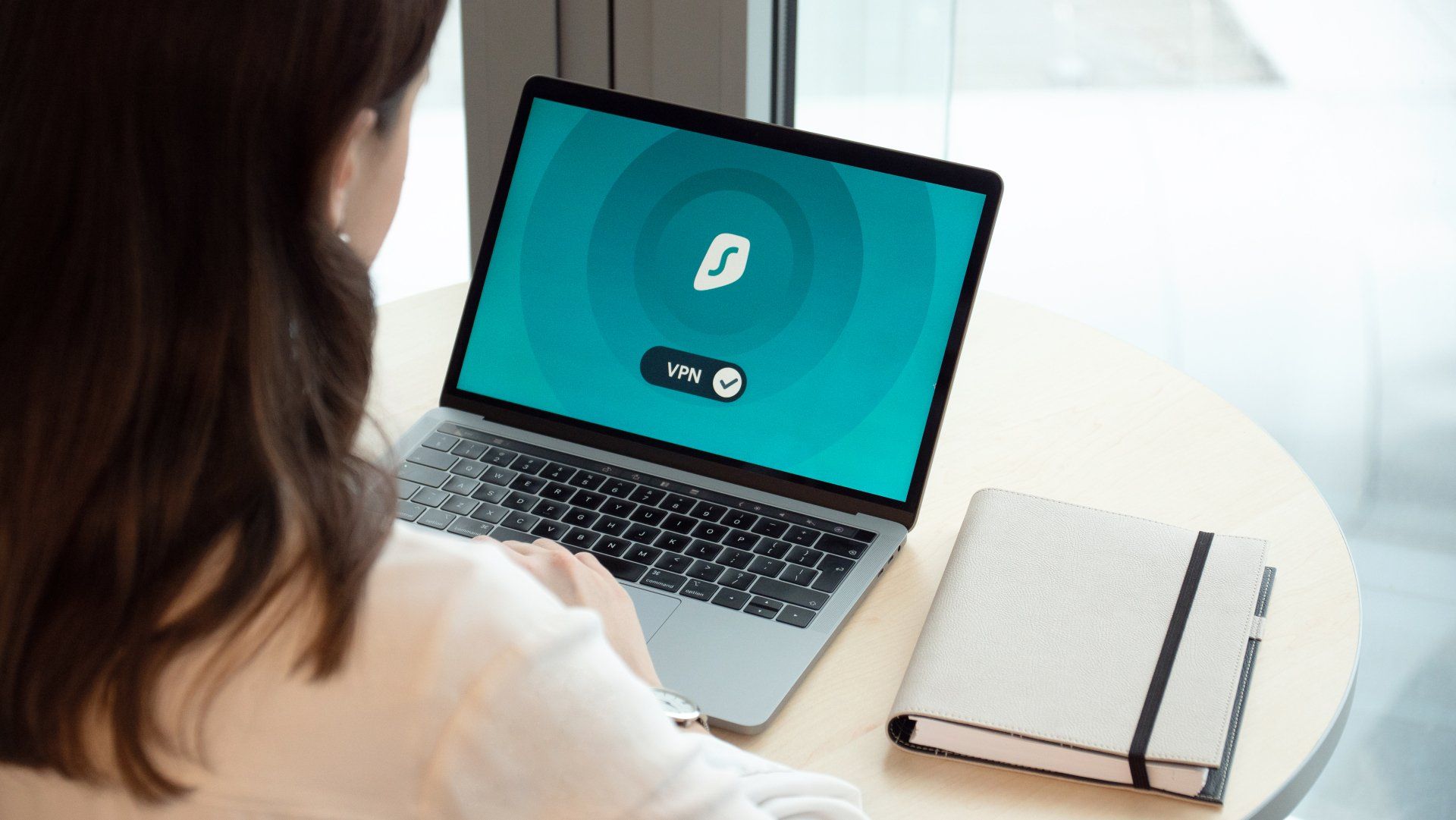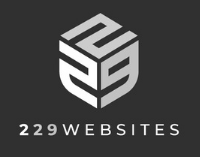The Importance of Website Security
The Importance of Website Security: Essential Measures to Protect Your Online Presence

In an era where virtual identities are as crucial as our real-life ones, maintaining website security has become a non-negotiable need. A single vulnerability on your law firm website, gym website, restaurant website or other small business websites, can act as a gateway for ruthless hackers to infiltrate, pilfer sensitive data, and wreak havoc on your hard-earned reputation. As we navigate the digital landscape of 2023, understanding the necessity of cyber-defenses is paramount. This blog post will shed light on the importance of website security, and guide you through essential measures you can take to armor your online presence against persistent threats lurking in the shadows of cyberspace. Let's unlock the key to a safer online future.
Website security is crucial as it helps protect businesses from malicious attacks and cyber-thieves that can damage their websites, networks, and other IT infrastructures. Implementing website security measures like HTTPS, strong passwords, two-factor authentication, network security protocols, and regular updates are recommended to safeguard sensitive data from hackers. Protecting websites from an array of security threats helps ensure peace of mind and safeguards the integrity of your online presence.
Understanding Cyber Threat Landscape
In today's interconnected digital world, understanding the cyber threat landscape is paramount to safeguarding your online presence. The term "cyber threat landscape" refers to the ever-evolving landscape of potential cybersecurity risks and vulnerabilities that can compromise the security of your website. This includes threats such as malware attacks, phishing scams, data breaches, and more.
To gain a deeper understanding of the cyber threat landscape, it is important to recognize that cybercriminals are becoming increasingly sophisticated in their methods. They continuously adapt to technological advancements and employ various techniques to exploit vulnerabilities. Some common methods include social engineering, where hackers manipulate individuals into divulging sensitive information or downloading malicious software unknowingly.
The cyber threat landscape is not static; it evolves alongside advancements in technology and changes in the digital landscape. It's crucial for businesses and individuals alike to stay informed about emerging threats and security best practices.
Now let's explore the role of hackers and their malicious intentions within this complex environment.

Role of Hackers and Malicious Intentions
Hackers play a significant role in the cyber threat landscape, as they are the ones seeking to exploit vulnerabilities for their own nefarious purposes. Their motivations can vary widely, ranging from financial gain to political activism or simply causing disruption.
One common motivation for hackers is financial gain. They may attempt to breach websites or networks with the intention of stealing valuable personal information, credit card details, or trade secrets that they can later sell on the dark web or use for fraudulent activities.
However, not all hackers seek monetary gain. There are also hacktivists who have political or ideological agendas and use hacking as a means to achieve their objectives. They may target websites or systems associated with organizations or individuals they perceive as adversaries or engage in acts of protest by defacing websites or leaking sensitive information.
Regardless of their motivations, hackers pose a significant threat to the security and integrity of your online presence. It is crucial to understand their techniques and motivations to effectively protect yourself and your website from their malicious intents.

Importance of Secure Online Interaction
In the fast-paced digital era, where online interactions have become an integral part of our lives, ensuring the security of these interactions is paramount. People share personal information, conduct financial transactions, and communicate sensitive data regularly over the internet. Without proper security measures in place, individuals and businesses expose themselves to significant risks. It is crucial to understand the importance of secure online interaction and take necessary precautions to protect ourselves and our valuable digital assets.
One key aspect of secure online interaction is safeguarding our personal information from falling into the wrong hands. Hackers and cyber-thieves are constantly on the lookout for vulnerabilities they can exploit to gain access to sensitive data like credit card details or social security numbers. Once they obtain this information, it can be sold on the dark web or used for malicious purposes such as identity theft, financial fraud, or unauthorized account access.
Imagine you're purchasing an item online and need to enter your credit card information. If the website you're using does not have proper security measures in place, your credit card details could be intercepted by hackers during transmission. The repercussions of such a breach could range from unauthorized charges on your card to potential identity theft. That's why secure online interaction is crucial to protect your financial well-being and personal privacy.
By implementing robust security measures for online interactions, individuals and businesses can safeguard their valuable digital assets. These assets may include websites, databases, customer information, intellectual property, and trade secrets. Without adequate protection, these assets are vulnerable to cyber attacks that can result in data breaches, financial losses, reputational damages, or even business closures.
From the perspective of a business owner, imagine building a successful e-commerce platform that has gained a loyal customer base over time. This platform houses valuable customer data such as names, addresses, email addresses, and purchase history. If this data were to be compromised due to inadequate security measures, it could not only lead to financial losses but also severely damage the trust between the business and its customers. Protecting these valuable digital assets is crucial for maintaining the integrity of the business and preserving its reputation.
Now that we understand the importance of secure online interaction and safeguarding our valuable digital assets, let's delve into the key aspects of robust site protection to defend against potential cyber threats.

Safeguarding Valuable Digital Assets
Securing valuable digital assets requires a multi-faceted approach that involves various security measures aiming to protect websites, databases, customer information, and other sensitive data. By implementing these measures, individuals and businesses can significantly reduce the risk of unauthorized access, data breaches, and other cyber threats.
One vital aspect of safeguarding valuable digital assets is ensuring the implementation of HTTPS (Hypertext Transfer Protocol Secure) on websites. HTTPS encrypts data transmitted between a user's browser and the website server, safeguarding any personal or financial information from being intercepted by malicious actors. Users can identify if a website uses HTTPS by looking for a padlock icon in the address bar or noticing "https://" at the beginning of the website URL.
Another crucial measure is regularly updating and patching software, content management systems (CMS), plugins, themes, and other components used on websites. Developers often release updates to address security vulnerabilities discovered over time. By staying up-to-date with these updates, individuals and businesses can strengthen their defenses against potential attacks.
Furthermore, employing robust authentication mechanisms like two-factor authentication (2FA) adds an extra layer of security to web accounts. With 2FA enabled, users are required to provide additional verification besides their username/password combination when logging in. This additional verification could be a unique code generated on their mobile device or biometric authentication such as facial recognition or fingerprint scanning. Implementing 2FA makes it significantly more difficult for unauthorized individuals to gain access to your accounts, as they would require both your login credentials and the secondary verification factor.
Implementing measures to prevent common web vulnerabilities like Cross-Site Scripting (XSS) attacks, SQL injections, or Man-in-the-Middle attacks is also essential. This can be achieved through adequate data sanitization, input validation, and implementing secure coding practices. Proper training and education about these vulnerabilities for developers, system administrators, and other relevant personnel can help minimize the risk of these security holes being exploited.
Safeguarding valuable digital assets requires a comprehensive approach that combines various security measures. By ensuring HTTPS implementation, keeping software up-to-date, utilizing strong authentication mechanisms, and addressing common web vulnerabilities, individuals and businesses can significantly enhance their website's security posture and protect their valuable digital assets from potential cyber threats.

Key Aspects of Robust Site Protection
Securing your website is crucial in today's digital landscape, where cyber threats are becoming increasingly sophisticated. By implementing robust site protection measures, you can safeguard your online presence and protect sensitive information from falling into the wrong hands. Let's explore some key aspects that contribute to a strong site protection strategy.
One vital aspect of site protection is keeping all software and systems updated. Cybercriminals often exploit vulnerabilities in outdated software to gain unauthorized access to websites. Regularly updating not only your content management system (CMS) but also any plugins or themes used on your website can help mitigate these risks.
Another essential aspect is conducting regular security assessments to identify vulnerabilities before they can be exploited. These assessments involve thoroughly scanning your website for weaknesses and potential entry points for hackers. By proactively identifying and addressing these vulnerabilities, you can reduce the risk of a successful cyber attack.
Furthermore, implementing a firewall is an important aspect of site protection. Firewalls act as a barrier between your website and potential threats, blocking unauthorized access attempts and filtering out malicious traffic. They can prevent common attacks such as SQL injections and cross-site scripting (XSS).
Imagine you have a physical store with valuable merchandise. To protect it, you would install high-quality locks on the doors, windows, and alarms for added security. Similarly, implementing firewalls is like adding layers of locks to your website to deter cybercriminals.
In addition to these measures, user authentication plays a crucial role in site protection. Enforcing strong password policies and implementing multi-factor authentication (MFA) adds an extra layer of security by requiring users to provide more than just a password to access your website or sensitive information.
Lastly, maintaining regular backups and having a disaster recovery plan in place are vital facets of site protection. In the unfortunate event of a security breach or data loss, having reliable backups allows you to restore your website quickly and minimize downtime.
By considering these key aspects of robust site protection, you can fortify your online presence and better protect your website from cyber threats. Nonetheless, there is another important measure that deserves specific attention: implementing Secure Socket Layer (SSL).

Implementing Secure Socket Layer (SSL)
Secure Socket Layer (SSL) is a cryptographic protocol that provides secure communication over the internet by encrypting data transmitted between a web server and a user's browser. It is an essential aspect of website security, particularly when it comes to protecting sensitive information such as passwords, credit card details, or personal data.
Think of SSL as sending a letter through regular mail versus sending it through certified mail. With regular mail, anyone along the route could potentially open and read the contents of the letter. However, with certified mail, the contents are securely sealed, and only the intended recipient can access it.
When implemented on a website, SSL ensures that any data exchanged between the server and the user remains encrypted and cannot be intercepted or tampered with by unauthorized individuals. This encryption protects against eavesdropping and helps establish trust between your website and its visitors.
An SSL certificate is required to enable encrypted connections on your website. It contains cryptographic keys that uniquely identify your website and authenticate its identity to visitors. Once installed, you'll see a padlock icon in the browser's address bar, indicating that the connection is secured with SSL.
By implementing SSL on your website, you not only enhance security but also improve user confidence. Visitors are more likely to trust your website if they see clear indications that their data is being protected. Additionally, Google considers SSL as a ranking factor in search results, which can positively impact your website's visibility.
Implementing SSL involves obtaining an SSL certificate from a reputable certificate authority (CA) and configuring it on your web server. Many hosting providers offer free or affordable options for acquiring and installing SSL certificates. It's important to follow best practices and ensure that the certificate is properly installed and stays up to date.
Now that we understand the importance of implementing Secure Socket Layer (SSL), let's explore some effective strategies for web security to complement this aspect of site protection.
- According to a study by Cybint Solutions, nearly 60% of companies have experienced a cyber-attack, with website attacks being one of the most common methods.
- The University of Maryland reported that an attempted hack occurs every 39 seconds, highlighting the constant threat websites are under.
- Symantec's Internet Security Threat Report found that over 75% of all websites have vulnerabilities that could potentially be exploited.
Effective Strategies for Web Security
In today's digital age, website security is crucial to protect your online presence from cyber threats and safeguard sensitive information. Implementing effective strategies can significantly reduce the risk of unauthorized access, data breaches, and malicious activities. Let's explore some key strategies that can enhance web security.
Regular Updates and Patch Management: Keeping your website's software, plugins, themes, and other components updated is vital. Developers frequently release updates that address security vulnerabilities and improve overall functionality. Failure to update leaves your website susceptible to exploitation by hackers who continually search for weaknesses.
Think of it like maintaining a house - regularly fixing broken doors or windows prevents burglars from easily gaining entry.
Nightly Backups: Regularly backing up your website is essential in case of a security incident or unexpected data loss. These backups can be stored offsite or on separate servers to ensure they are not compromised if any breach occurs.
For example, imagine waking up one morning to find your website defaced or deleted entirely. Having a recent backup allows you to quickly restore your website to its previous state, minimizing the impact.
While these strategies provide a foundation for web security, adopting authentication and encryption measures takes your safeguards to another level.
Adopting Authentication and Encryption Measures
Consider the scenario where you run an e-commerce website handling customers' personal information, payment details, and transaction data. To protect this sensitive information from falling into the wrong hands, it's crucial to implement robust authentication and encryption measures.
- Two-Factor Authentication (2FA): Implementing two-factor authentication adds an extra layer of security by requiring users to provide two pieces of evidence to authenticate their identity. This typically involves combining a password with another factor like a biometric scan or a unique code sent via SMS or email. By doing so, even if a hacker manages to steal or guess a password, they still won't be able to access the account without the additional factor.
- Secure Socket Layer/Transport Layer Security (SSL/TLS): SSL/TLS certificates encrypt the data transmitted between a user's browser and your website server. This encryption ensures that sensitive information, such as login credentials, credit card details, and personal data, is protected from interception by unauthorized parties. Implementing SSL/TLS can help establish trust with visitors and protect against forms of attacks like man-in-the-middle.
Some argue that implementing robust security measures can be cumbersome for users, potentially leading to frustration and abandonment of websites or applications. While it is true that additional authentication steps might introduce some inconvenience, it is essential to strike a balance between security and usability. By educating users about the importance of these measures and providing clear instructions on how to navigate them, businesses can ensure secure experiences without compromising usability.
Incorporating these authentication and encryption measures into your web security strategy demonstrates a commitment to safeguarding sensitive data and maintaining user trust. However, remember that web security is an ongoing process that requires regular updates, monitoring, and proactive measures.
- To protect sensitive information on an e-commerce website, it is crucial to implement robust authentication and encryption measures. Two-factor authentication adds an extra layer of security, while SSL/TLS certificates encrypt the data transmitted between a user's browser and website server. It is essential to strike a balance between security and usability by educating users about the importance of these measures and providing clear instructions on how to navigate them. Incorporating these measures into your web security strategy demonstrates a commitment to safeguarding sensitive data and maintaining user trust, but web security is an ongoing process that requires regular updates, monitoring, and proactive measures.
Website security has always been a crucial part of anyone accessing data online. Much more so today. Want to make sure that the website you are making is secure? Click the button below!

SEO Services
West Virginia
- Morgantown WV
- Huntington WV
- Martinsburg WV
- Parkersburg WV
- Wheeling WV
- Beckley WV
- Fairmont WV
- Clarksburg WV
- Princeton WV
Virginia
- Richmond VA
- Virginia Beach VA
- Alexandria VA
- Arlington VA
- Chesapeake VA
- Norfolk VA
- Fairfax VA
- Roanoke VA
- Fredericksburg VA
- Charlottesville VA
Ohio
- Columbus OH
- Cleveland OH
- Cincinnati OH
- Dayton OH
- Toledo OH
- Akron OH
- Canton OH
- Youngstown OH
- Dublin OH
- Westerville OH
Kentucky
- Louisville KY
- Lexington KY
- Bowling Green KY
- Paducah KY
- Owensboro KY
- Florence KY
- Elizabethtown KY
- Richmond KY
- Frankfort KY
- Ashland KY
North Carolina
- Charlotte, NC
- Raleigh, NC
- Durham, NC
New Jersey
- Morristown, NJ
- Jersey City, NJ
- Hoboken, NJ
- Long Beach Island, NJ
- Cherry Hill, NJ
Florida
- Orlando, Florida
- Tampa, Florida
- Jacksonville, Florida
Website Design Services
West Virginia
Virginia
Ohio
MAIN OFFICE
Have a question?
Email us
We will get back to you as soon as possible
Please try again later








